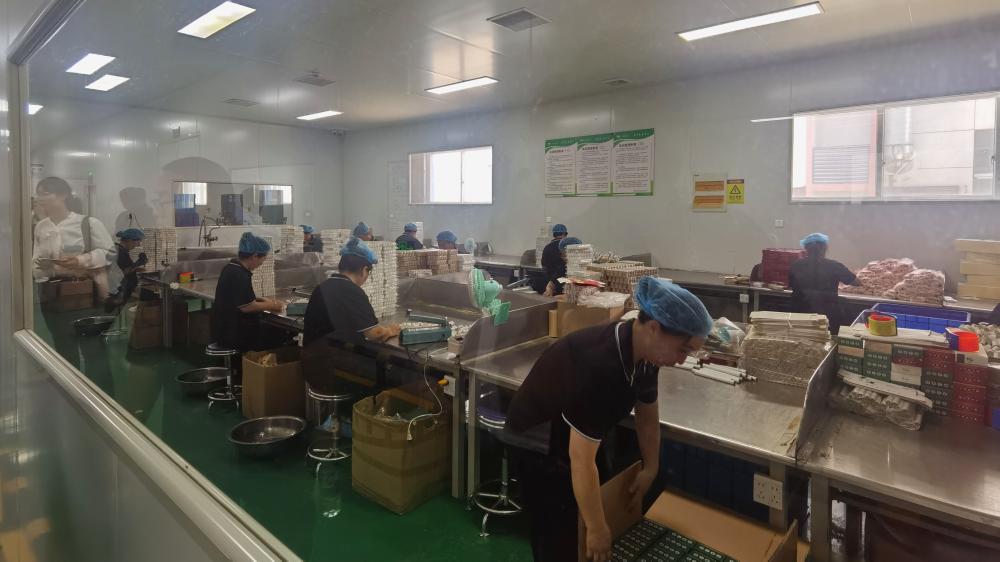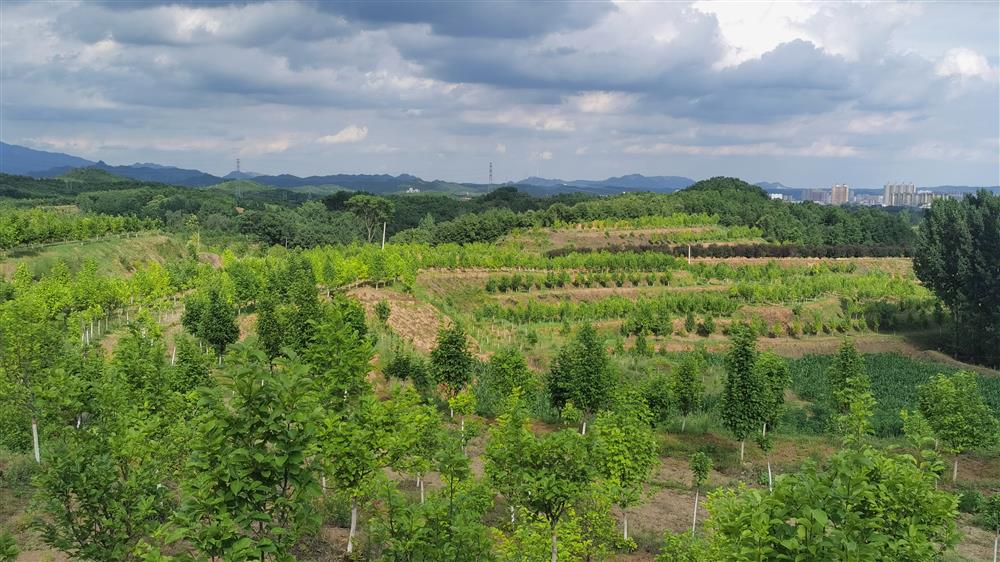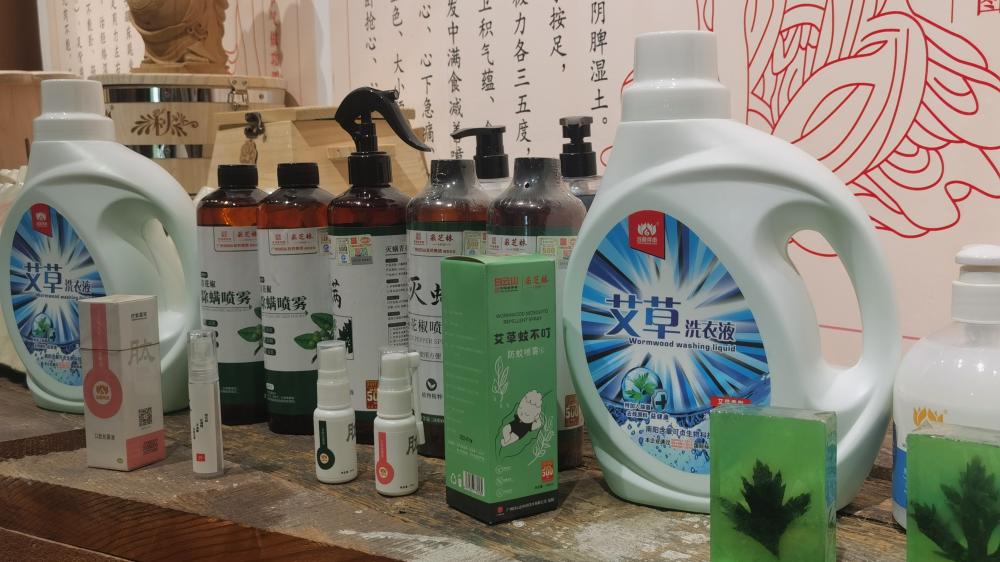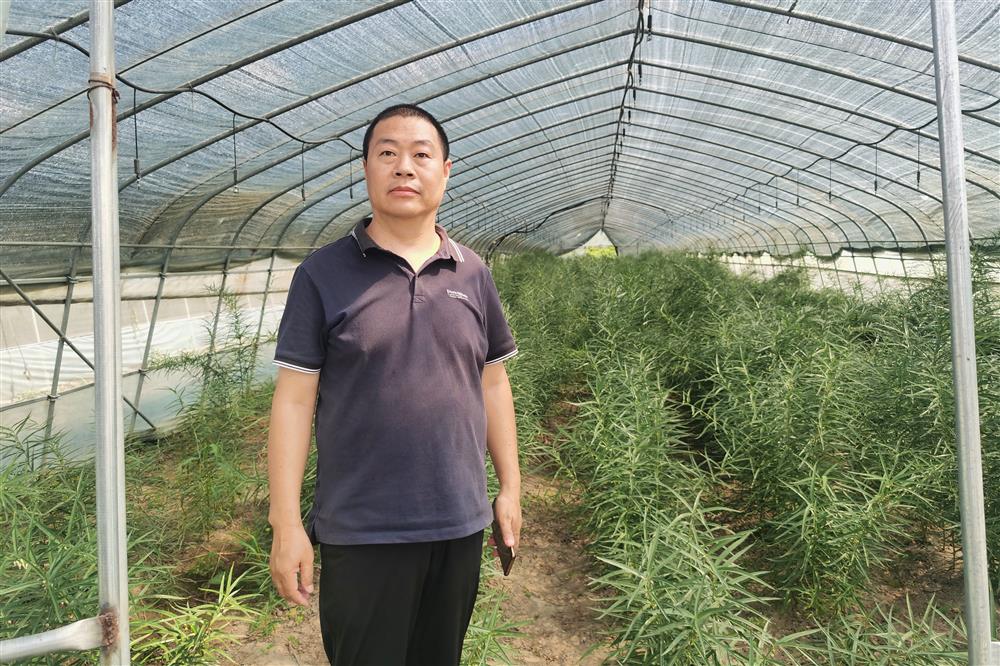The millennium old traditional customs in Nanzhao are rejuvenated, with "golden leaves" flourishing, and the body of mugwort picking during the Dragon Boat Festival | modern | tradition
During the Dragon Boat Festival, there has been a custom of picking mugwort in Chinese folk culture since ancient times. The "Jingchu Suishi Ji" from the Northern and Southern Dynasties period records: "On the fifth day of the fifth month, picking mugwort as a person, hanging it on the door to ward off poisonous gas." To this day, many regions still retain the custom of picking mugwort on the Dragon Boat Festival.
In Nanzhao County, Nanyang City, Henan Province, a large number of people go up the mountains to pick mugwort around the Dragon Boat Festival every year. The collected mugwort leaves are made into various mugwort products by local enterprises and sold nationwide.
Recently, the Aicao Culture Festival was held in Nanzhao County, and reporters visited several local traditional Chinese medicine enterprises. Here, the traditional custom of picking mugwort during the Dragon Boat Festival is being given new vitality by the thriving modern traditional Chinese medicine industry in the local area.
The Dragon Boat Festival picking of Artemisia argyi has been given new vitality by the modern traditional Chinese medicine industry.
Dragon Boat Festival picking mugwort

Artemisia argyi has a long history of use in China. At the Xiaokong Mountain Site in Nanzhao County, archaeology has discovered relics of ancient humans using ice spheres to gather light and ignite mugwort to make fires about 30000 years ago. Therefore, mugwort, also known as Bingtai, is recorded in the "Records of Natural History" of the Western Jin Dynasty: "When the ice is cut to a round shape and lifted towards the sun, the mugwort is used to support its shadow, resulting in fire, hence the name Bingtai."
The custom of picking mugwort also has a long history in Chinese folk culture. As early as the pre Qin period, the Book of Songs recorded: "He Cai Ai Xi, disappeared in a day, like three years old."
Traditional Chinese medicine believes that the Dragon Boat Festival is the day of the year when Yang energy is at its peak, and it is also the season when mugwort has the best medicinal properties. Every Dragon Boat Festival, every household goes out to pick mugwort, drink mugwort wine, wear mugwort tigers, hang mugwort leaves, or use moxibustion to ward off evil and drive away malaria. The "Jingchu Suishi Ji" records: "On the fifth day of the fifth month, before the rooster crows, collect mugwort and pick it from a place that resembles a human. Moxibustion is effective."
"The medicinal effect of mugwort during the Dragon Boat Festival is the best, and the purchase price is also the highest." said Shan Huijun, the general manager of Yizhicao Pharmaceutical Co., Ltd. "The first batch of mugwort during the Dragon Boat Festival is purchased at a price of 1800 to 2600 yuan per ton; the subsequent second, third, and fourth batches of mugwort vary in quality price, ranging from around 1400 to 2300 yuan." She also told reporters that in her company, "mugwort during the Dragon Boat Festival must be used for moxibustion and body conditioning; after the Dragon Boat Festival, mugwort can be considered to be made into derivative products such as essential oils."
The planting area of traditional Chinese medicine in Nanzhao County reaches 420000 acres.

Increase income and become rich
A small mugwort plant carries the traditional customs of Nanzhao County that have lasted for thousands of years, and has also become the "golden leaf" for people in mountainous areas to increase their income and become prosperous.
Nanzhao County is located at the southern foot of Funiu Mountain, with nearly a hundred kilometers of native forest belt, rich in traditional Chinese medicine such as Xinyi, Cornus officinalis, Eucommia ulmoides, and Platycodon grandiflorus. Among the 365 medicines recorded in the Shennong Materia Medica Classic, there are 210 traditional varieties produced in Nanzhao. According to the National Survey of Traditional Chinese Medicine Resources, there are as many as 253 families and 1104 types of Chinese medicinal materials in Nanzhao.
However, it is not easy to directly convert the wild Chinese medicinal materials scattered throughout the mountains into economic benefits. A local entrepreneur told reporters that he once went up the mountain with a medicinal farmer to pick herbs. Due to the time-consuming and laborious process of distinguishing wild Chinese medicinal materials, the average daily harvest per person could only be sold for about 50 yuan.
Aitiao processing workshop.

To achieve income growth and prosperity, large-scale planting is also necessary. In Nanzhao County, there is a 10000 acre mugwort planting base and a storage base that can hold 15000 tons of raw materials. Huakang Aiye Group is the largest mugwort enterprise in the area, covering an area of 72600 square meters. The total investment of the mugwort industrial park exceeds 90 million yuan and it employs more than 300 production employees. In the mugwort processing workshop, the reporter saw the workers carefully operating the machine to roll mugwort sticks. Thumbs thick mugwort sticks kept rolling out of the machine, and the workers bagged and packaged the finished mugwort sticks. Boxes of mugwort products piled up like mountains.
Ji Liangyuan, General Manager of Nanyang Huakang Ai Products Co., Ltd., told reporters that the company has more than 20 sets of technologically advanced fully automatic production lines, producing 12 series of over 100 products, including mugwort sticks, mugwort patches, medicated moxibustion, smokeless mugwort, raw materials of mugwort leaves, mugwort fabrics, mugwort instruments, mugwort sets, daily chemical care, etc. The annual comprehensive production capacity reaches 3000 tons, and sales and services are provided to tens of thousands of customers and more than 5700 suppliers in 31 provinces, cities, and autonomous regions across the country.
More than 100 products.
From mugwort priced in tons to essential oils priced in grams, companies have extended their industrial chains through technological innovation, greatly enhancing the added value of their products. At Yizhicao Pharmaceutical Co., Ltd., the company has collaborated with several top traditional Chinese medicine universities to build the first GMP standard 10000 level purification and dust-free workshop in the county. General Manager Shan Huijun told reporters that the company uses multiple processes such as cold extraction to make mugwort into pure dew and essential oil, which are popular both domestically and internationally. "Every ton of mugwort produces 1.5 to 1.8 kilograms of essential oil. The price per ton of mugwort is about 1500 yuan, and each kilogram of mugwort oil can be sold for over 4000 yuan," she said.
In addition to essential oil products, the company's Moxibustion Business School also has a professional Moxibustion Hall, providing whole store training output. Currently, it has attracted over a hundred franchisees from Beijing, Shanghai, Guangzhou, Chongqing and other places to participate.

Hometown of Herbs
In Nanzhao County, the production of traditional Chinese medicine represented by mugwort has become an important industry in this small mountainous county.
31 professional cooperatives for the cultivation of traditional Chinese medicine have been developed here, planting more than 40 varieties such as Xinyi, Cornus officinalis, Eucommia ulmoides, Platycodon grandiflorus, Salvia miltiorrhiza, Gastrodia elata, Forsythia suspensa, Polygonatum sibiricum, Bai Ji, Dendrobium officinale, Chonglou, and Qingqianliu. The planting area reaches 420000 acres, with an annual total output of 6.3 million kilograms and a production value of 160 million yuan.
At Nanzhao County Lvfengyuan Agricultural Development Co., Ltd., General Manager Dong Baocun told reporters that the traditional Chinese medicine seedling base invested and constructed by the company in 2018 covers an area of 260 acres, with a total investment of 20 million yuan. It has built 100 high standard breeding greenhouses, carried out standardized, large-scale, and industrialized seed and seedling breeding, and promoted excellent varieties for local farmers.
At present, the enterprise supplies 20 million pieces of powder tetrandrum, 40 million pieces of yellow essence, 50 million pieces of white ginger, and 2 million pieces of sheep flower to the market every year, ensuring the production and quality of traditional Chinese medicine in Nanzhao County from the source.

Dong Bao has a high standard breeding greenhouse for high-quality seeds.
Today in Nanzhao County, thousands of traditional Chinese herbs reside and reproduce together with humans, composing a concerto of harmonious coexistence between humans and nature.



